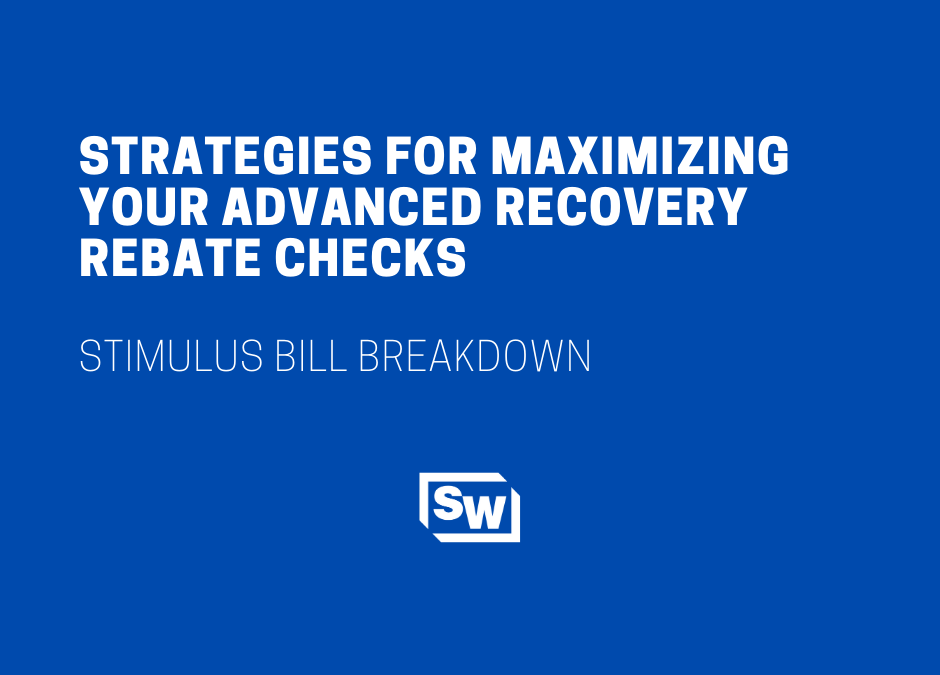The Coronavirus Aid, Relief, and Economic Security (CARES) Act signed into law by President Trump on March 27, 2020 provides for individuals to receive advanced rebate checks or “stimulus checks” in the coming weeks and months. While this will take time to implement, it allows time for taxpayers to consider some strategies depending on their specific tax filing situation.
The amount of your stimulus check will depend on your filing status, family size, and adjusted gross income (AGI). The payment for single filers is $1,200, while a married filing joint couple can receive $2,400. There is also an additional $500 for each child under the age of 17 claimed on your tax return. These amounts begin to be reduced once your AGI exceeds $75,000 for a single taxpayer or $150,000 for a married filing joint couple.
Your payment is calculated based on your 2019 tax return, if already filed, or your 2018 return, if 2019 has not yet been filed, which is where some strategy can come into play. If you don’t normally file a tax return because your income is below the filing threshold, you should file your 2019 tax return now so that you can get your stimulus check. Note: If you don’t need to file a tax return but receive Social Security, the IRS will calculate a payment based on your Form 1099-SSA. If you had gross income that did not exceed $12,200 ($24,400 for married couples) for 2019 or were not otherwise required to file a federal income tax return for 2019, and didn’t plan to, you can enter your payment information on the IRS’ website here.
If you filed your 2018 return but have not yet filed your 2019 return, you should consider which would be more advantageous in calculating your payment. If you would receive a larger payment based on your 2019 return, then you should get that filed as soon as possible. If the calculation would result in a larger payment based on your 2018 return, you should consider waiting to file 2019 until you receive your payment.
For example, take a married filing joint couple with an AGI of $100,000 in both 2018 and 2019. They had their first child in 2019 and therefore it would be more advantageous to file their 2019 return to get the additional $500 payment for their child.
Let’s say we have a single taxpayer with an AGI of $70,000 who has a child that was 16 years old on their 2018 return and will now be 17 years old on their 2019 return. It would be more advantageous to hold off on filing their 2019 return to avoid losing the additional $500 payment for their child. The same strategies could be considered if you are over the threshold for your filing status in either 2018 or 2019, but not both.
The payment that you receive is considered an advance payment against a credit that will be computed based on your 2020 tax return. It is important to note, however, that the language in the CARES Act does not require you to repay or recognize as income any excess amount if your advance payment is larger than the credit.
There are many scenarios to consider based on each person’s specific financial situation so if you need any help in determining the best strategy for you, please reach out to your Sciarabba Walker contact or email us at info@swcllp.com.

